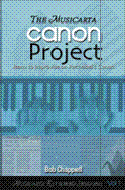Welcome to Musicarta's
Piano Flashcards
download page
Download these flashcards to help you learn the names of the piano keys and how written music represents them.
Click the [download here] link to open the pdf in a new tab, then save it to your computer.
The numbering doesn't denote any particular sequence.
Flashcard No.1
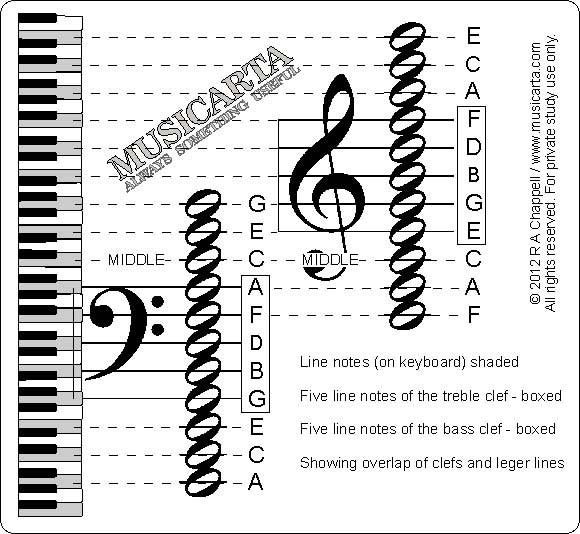
Flashcard No.2
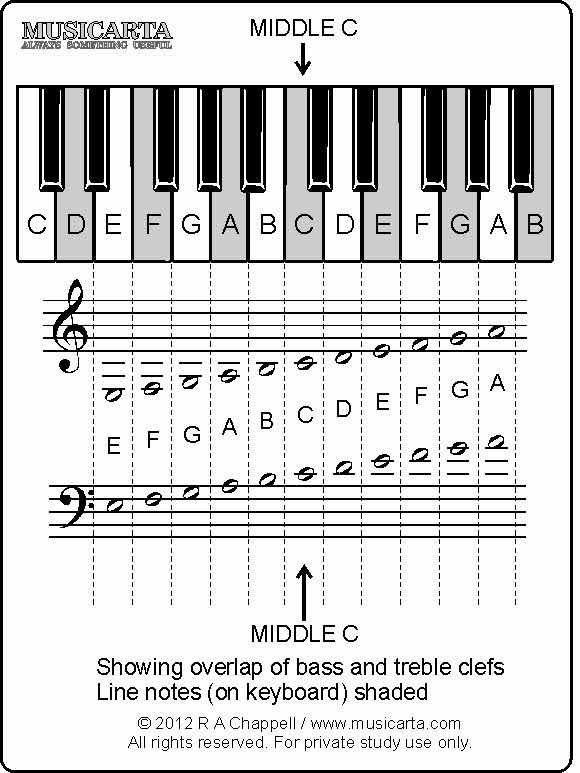
|
The MUSICARTA 12-BAR PIANO STYLES WORKBOOK Blues, boogie-woogie, rock’n’roll – twelve-bar music comes in many forms, and a working knowledge of the basics is essential for the modern keyboard player. The Musicarta Twelve-bar Piano Styles workbook puts dozens of real 12-bar riffs and grooves into your repertoire and walks you through the rhythmic, harmonic and melodic building blocks of the 12-bar style. |
|
Flashcard No.3
Learning the piano by reading music gets off to a sticky start - middle C (the first note in most piano 'methods') is a leger line in both clefs. It can be a long time before the pupil is on firm ground, but at least the picture is symmetrical.
The 'Play and say' is meant to be taken literally. You play and say C-D-E to 'get out of No Man's Land' into the treble clef. You anounce the significance of the E a third above middle C - it's 'the bottom line (note) of the treble clef'.
Then you climb up the line-note KEYS, naming them BY SIGHT. (Knowing which of the keys on the keyboard are 'line-note keys' is in itself an excellent clarification.)
Repeat going the other way, saying and playing C-B-A to get onto the bass clef. Announce "A is the top line (note) of the bass clef," then count off the five 'line notes' of the bass clef (actually 'line-note keys') GOING DOWN.
(Learning the bass clef line notes from the bottom up when the tutor methods all venture in from the top down is not the best idea.)
It's worth checking regularly for a few years that your pupils, of whatever age, really do have this 'visual fact' secure.
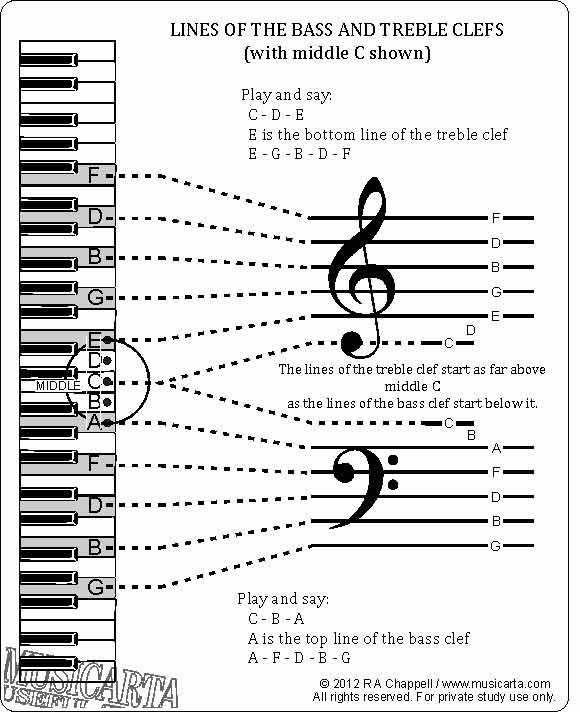
|
The MUSICARTA The modes are known as scales for improvisation – and for generating intriguing chord sequences not available in the conventional major/minor key system. Here is a methodical, ‘lean’ approach to building a sound and productive knowledge of modes for the modern-styles keyboard player, packed with riffs which will expand your chord vocabulary and your repertoire of rhythmic keyboard skills. |
|
Flashcard No.4
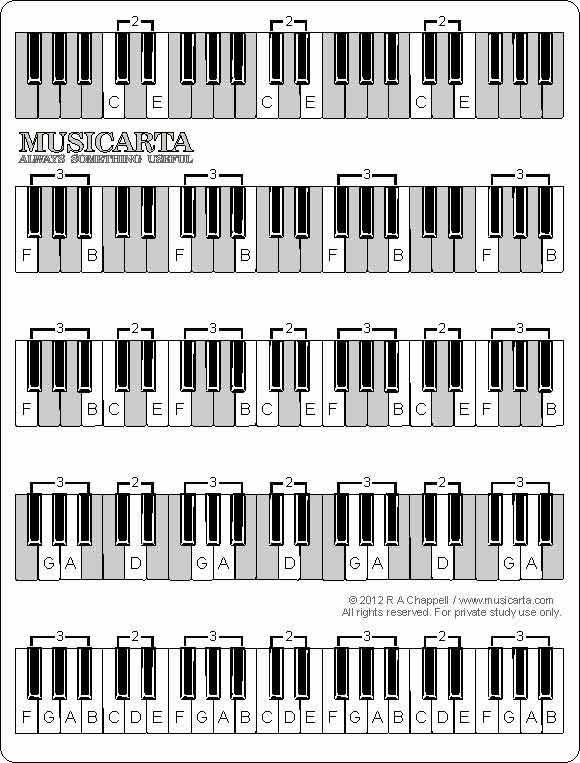
|
MUSICARTA EASY The Musicarta Easy Piano Style shows you how to get your hands on the keys and start making music right away! With lots of graphics, full audio and MIDI support and all the solos on the Mister Musicarta YouTube MEPS video playlist, you’re sure to get some beautiful pieces into your repertoire quickly – and learn how to find the music in the keyboard for yourself. |
|
Flashcard No.4 (method)
This is the 'script' for the flashcard above. The teacher has this one - the one above is on the music stand.
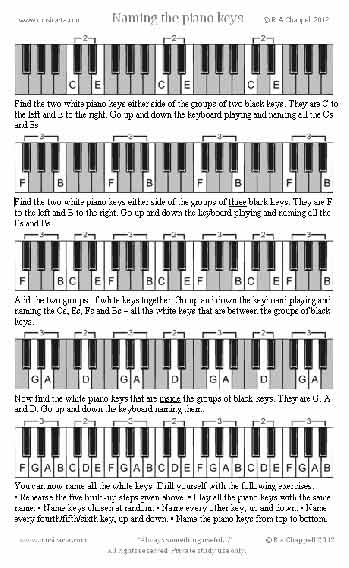
|
'Chords for Carl'
Now a fully video-supported approach to keyboard chord texture and building a full modern solo performance, this unique teach-yourself opportunity shows you only what you need to know and exactly how to learn it. |
| ||
Got a newsletter discount code? You want the discount sales page!
Flashcard No.5
Since we seem condemned forever to start learning (and teaching) piano from middle C - a leger line in both clefs - anything that clarifies is welcome.
Knowing which are the piano keys are 'line notes' certainly helps - hence the shaded keyboards.
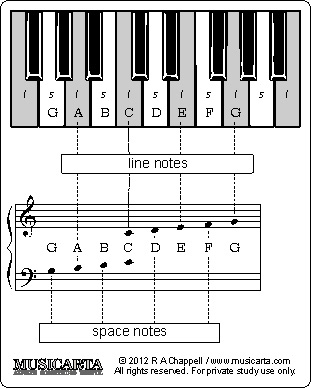
Flashcard No.6
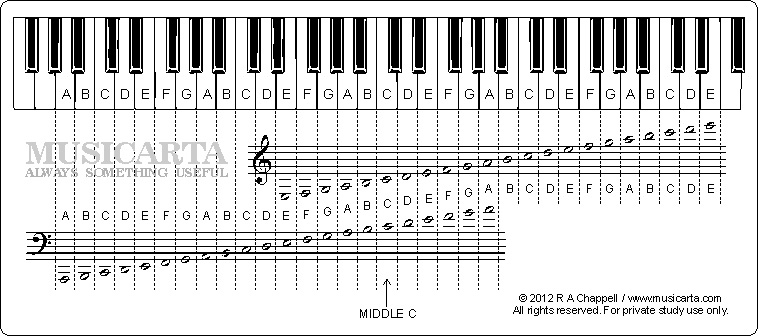
Flashcard No.7
Here's 'a little known fact': the leger lines of a clef - plus the top or bottom line of the five permanent lines - have the same names as the space notes of the clef.
This sometimes just 'tips the balance' into remembering.
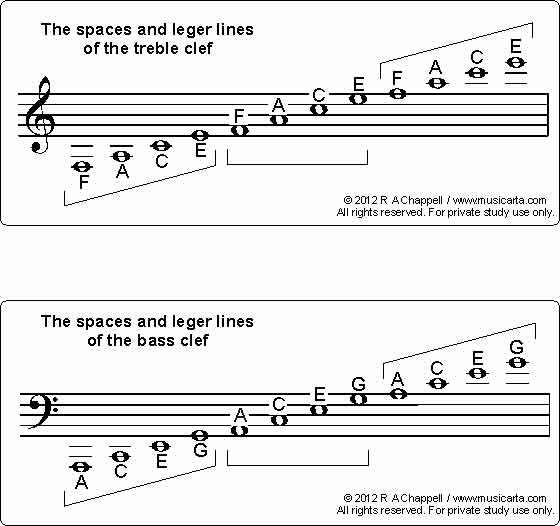
|
The PYRAMIDS VARIATIONS Building major and minor chords, understanding chord symbols, forming inversions, seventh chords, suspensions and ‘slash chords’, song form, syncopation and anticipation, playing a chord sequence in different rhythms – a practical, hands-on introduction to essential music theory. |
|
Click through to the Pyramids Variations YouTube playlist here.
Have these cards lying around your teaching room or earning space. Print a dozen - give them to your friends, use them as bookmarks, laminate them and use them as drinks coasters...
All those micro-seconds of uncertainty about that second space note up in the bass clef, those leger lines below the treble clef - add up to a not-very-good player.
That's not who you are. Grasp the nettle! Drill until you're a speed-of-light lines-and-spaces ninja!
Then you can get on with being a musician!
Thanks for visiting MUSICARTA! Come again soon!
|
OUT NOW! |
THE MUSICARTA BEAT & RHYTHM WORKBOOK At last! An effective approach to keyboard rhythm & syncopation skills. Learn more! |
ONLY $24.95! |
The MusicartaA methodical approach to keyboard syncopation for
|
PUBLICATIONS
exciting keyboard
creativity courses
CHORDS 101
WORKBOOK

~HANON~
video course

Musicarta
Patreon
PENTATONICS
WORKBOOK
video course

Creative Keyboard
video course

BEAT AND RHYTHM
WORKBOOK

- Volume 1 -

12-BAR PIANO
STYLES WORKBOOK

MUSICARTA MODES
WORKBOOK

PIANO STYLE

CANON PROJECT
video course

VARIATIONS
video course


- Piano Solo -
video course

- Piano Solo -


YouTube playlists
THERead all |
|
|
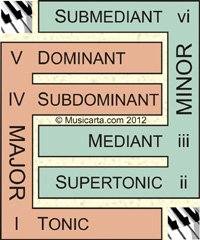
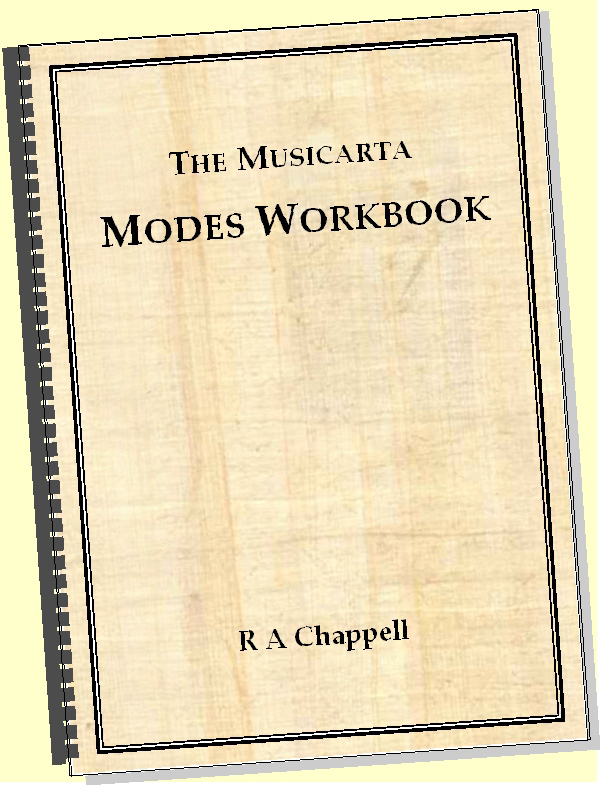
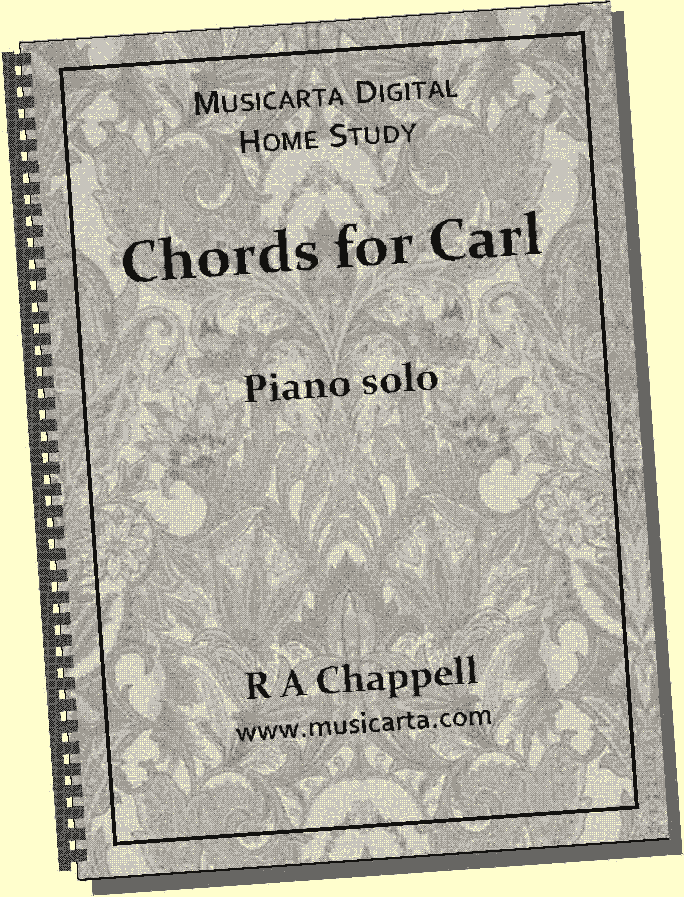






 THE LOGO
THE LOGO

